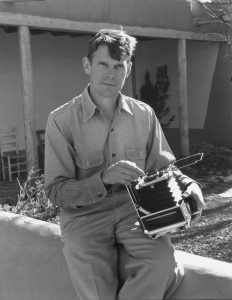![]()
 Eliot Porter took up color photography at a time when it was widely considered “too literal,” and thus unsuitable for artistic images. His book, In Wildness is the Preservation of the World, marked a turning point in the acceptance of fine art color photography. The book was the first of many color books that the Sierra Club would publish by a variety of artists, and the first of twenty-five monographs of color photos Porter would produce.
Eliot Porter took up color photography at a time when it was widely considered “too literal,” and thus unsuitable for artistic images. His book, In Wildness is the Preservation of the World, marked a turning point in the acceptance of fine art color photography. The book was the first of many color books that the Sierra Club would publish by a variety of artists, and the first of twenty-five monographs of color photos Porter would produce.
Porter taught himself black and white camera and darkroom techniques while he was a teenager, and by the later 1930s he was a master printer with a growing reputation. In 1939 he took up color photography, which he focused on almost exclusively by the 1950s. He learned Kodak’s complicated dye transfer color printing process, which afforded great control over hues and produced stable color prints. Starting in 1962, he also used professional printers to make his prints, which he would then mount and spot.
Porter used a medium format view camera designed to hold 4 x 5 inch sheets of film, mounted on a tripod. To photograph birds, a beloved subject, he used a system of strobe lights. He would typically spend several hours composing the scene.
The Dye Transfer process enabled him to make full-color prints from film exposed in camera. From the original color film, three inter-negatives are exposed through red, green, and blue filters. From these separation negatives, gelatin reliefs capable of absorbing dyes in exact proportion to the densities of the negatives are made. The matrices are then dyed in the complementary colors, cyan, magenta, and yellow, and applied to the paper in exact register, along with highlight and shadow masks. The acid of the dyes migrate to the base of the paper, resulting in the final print.